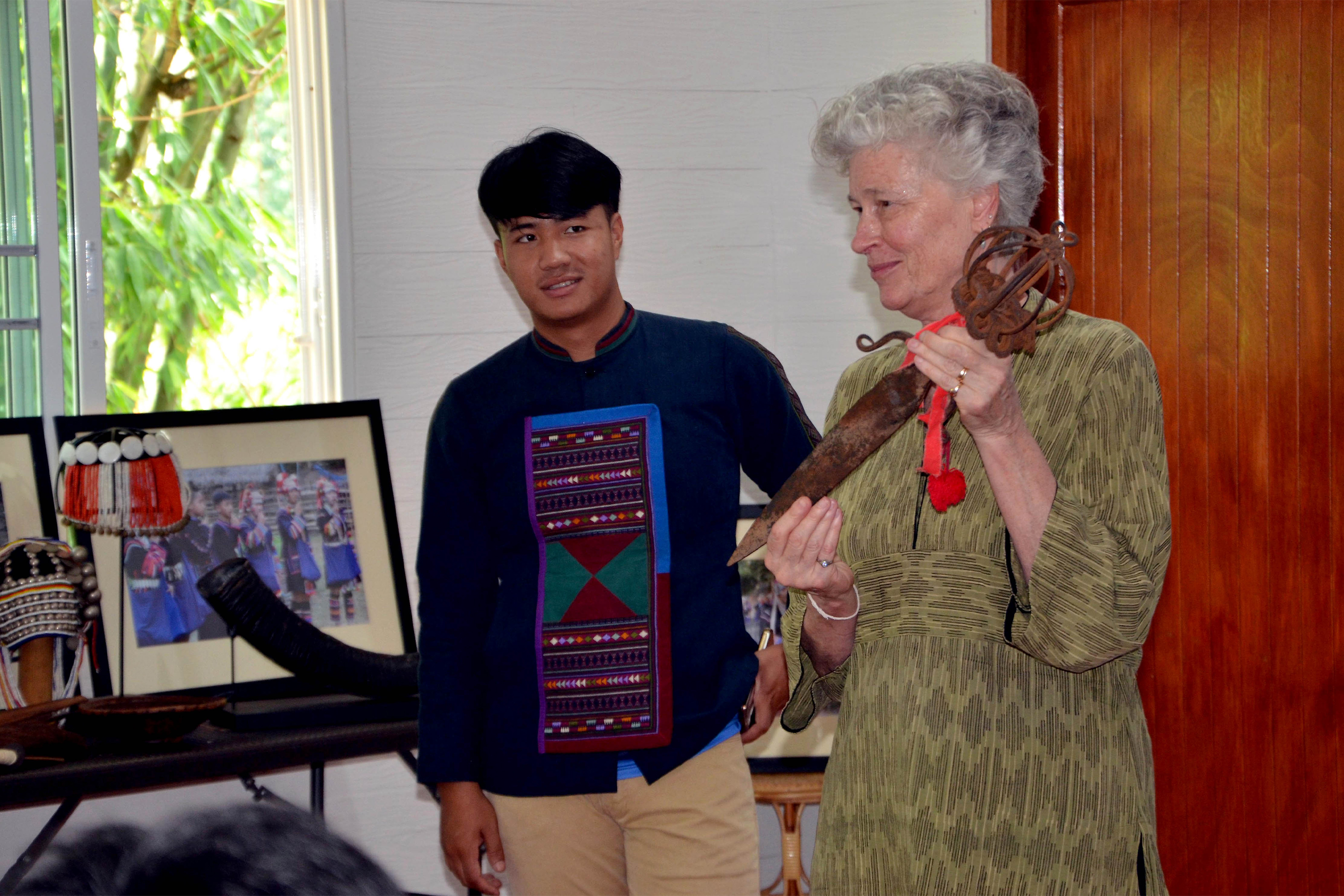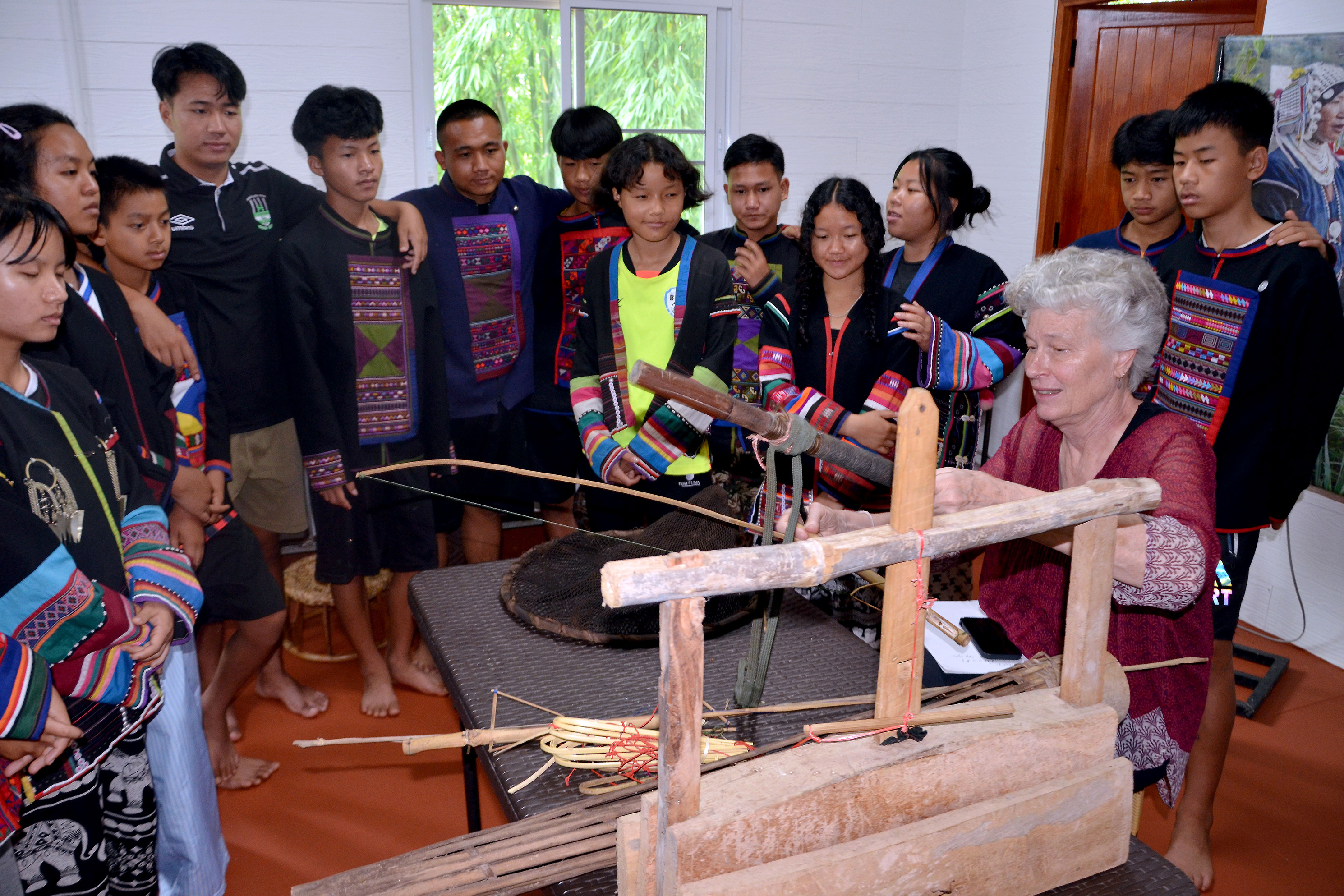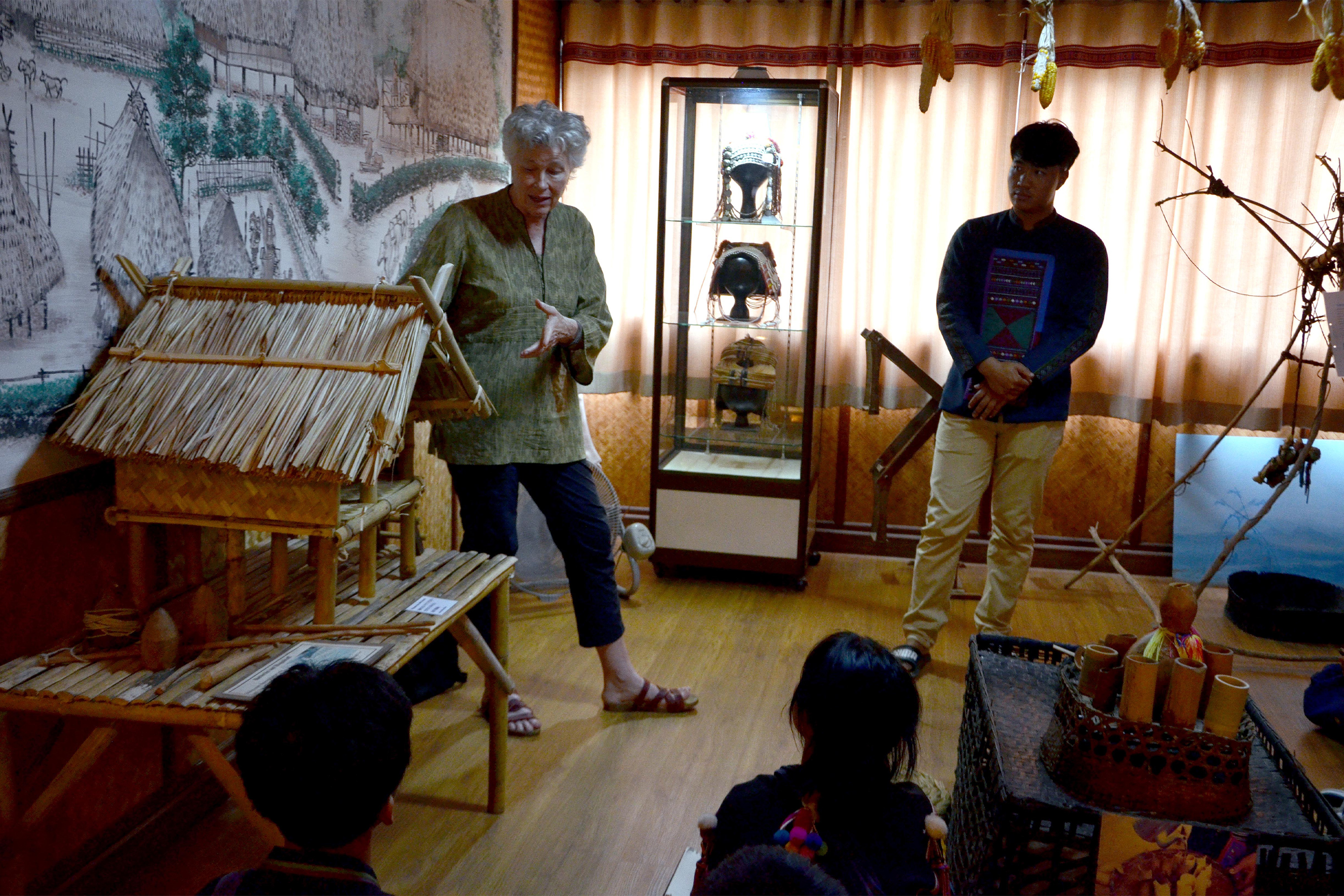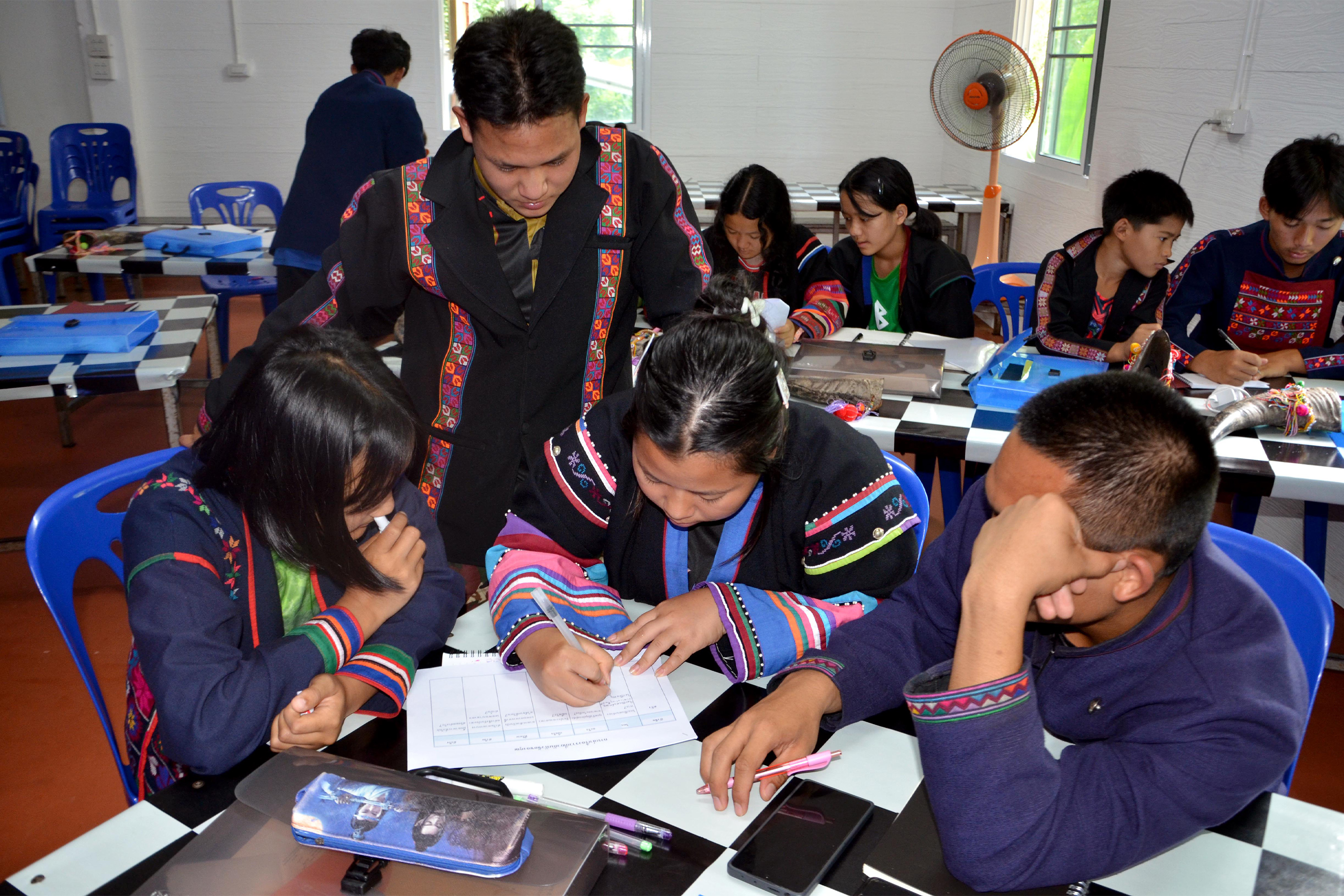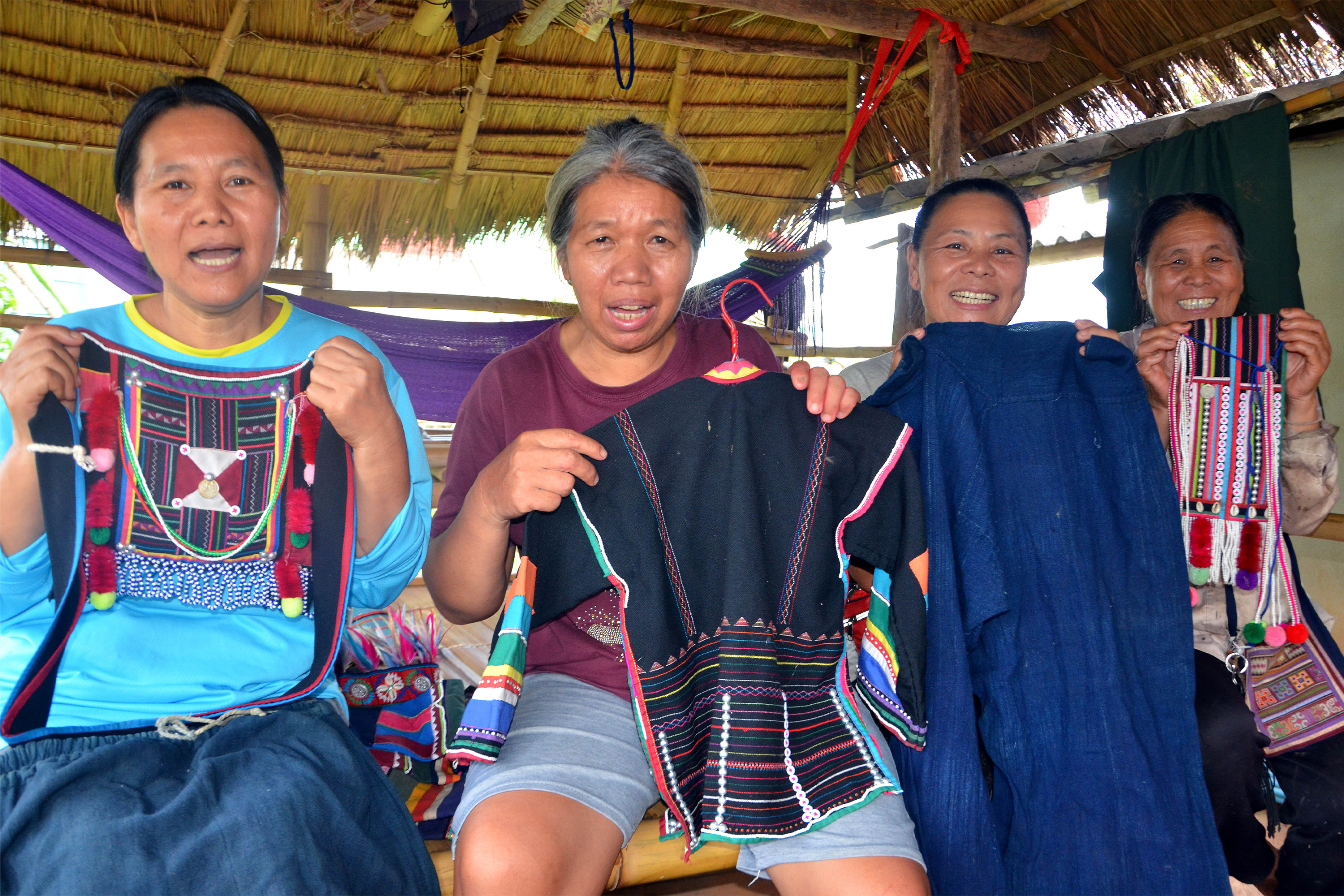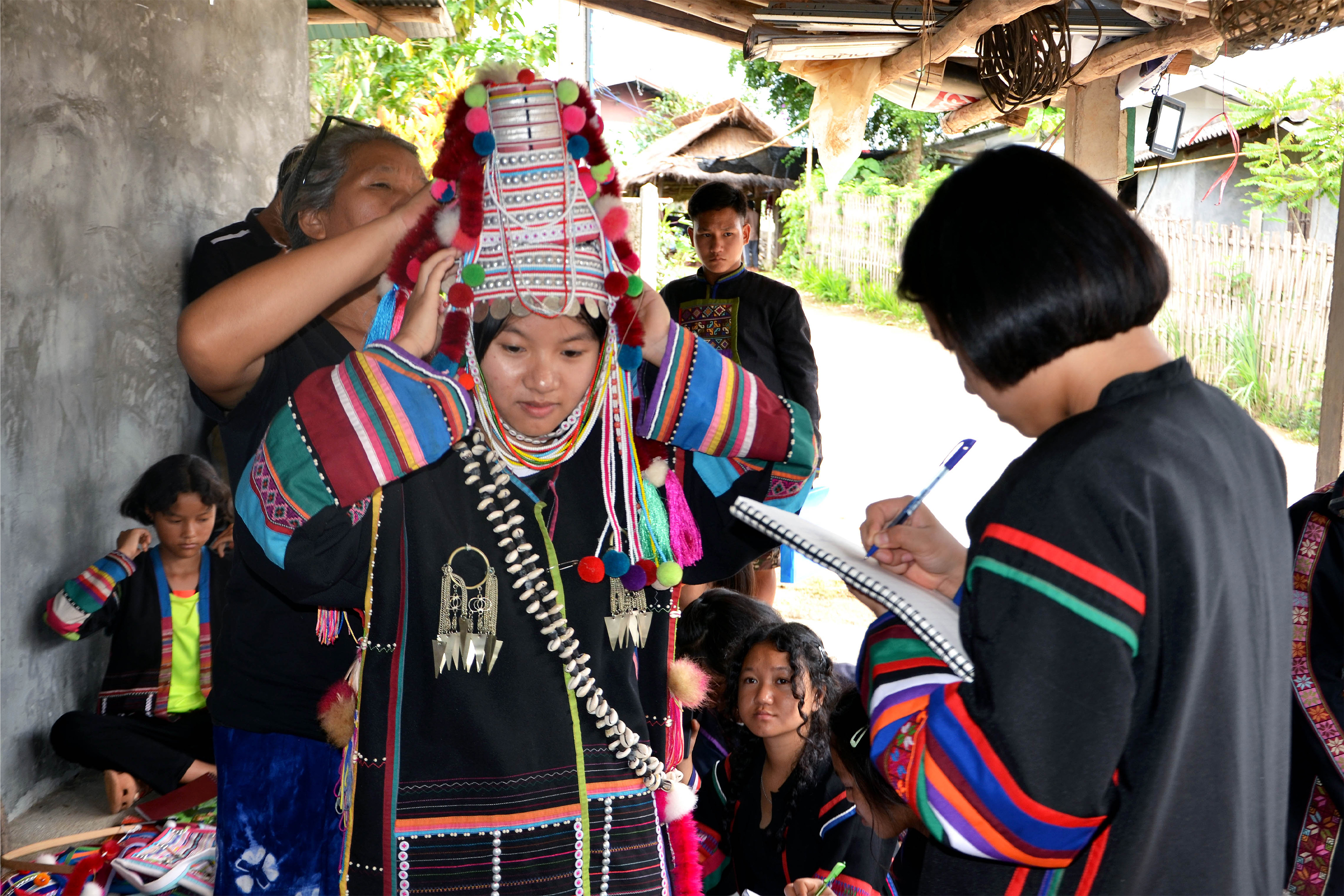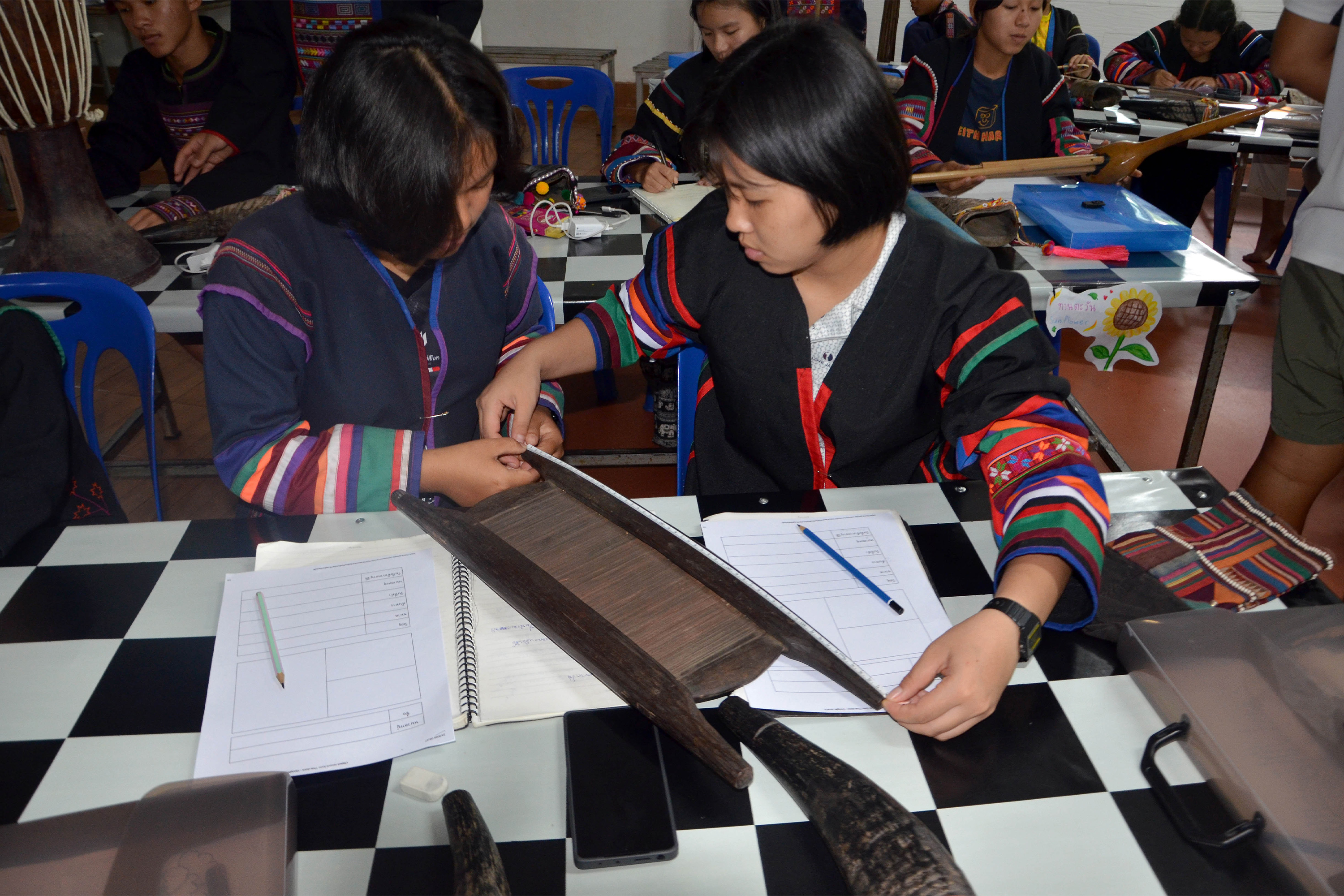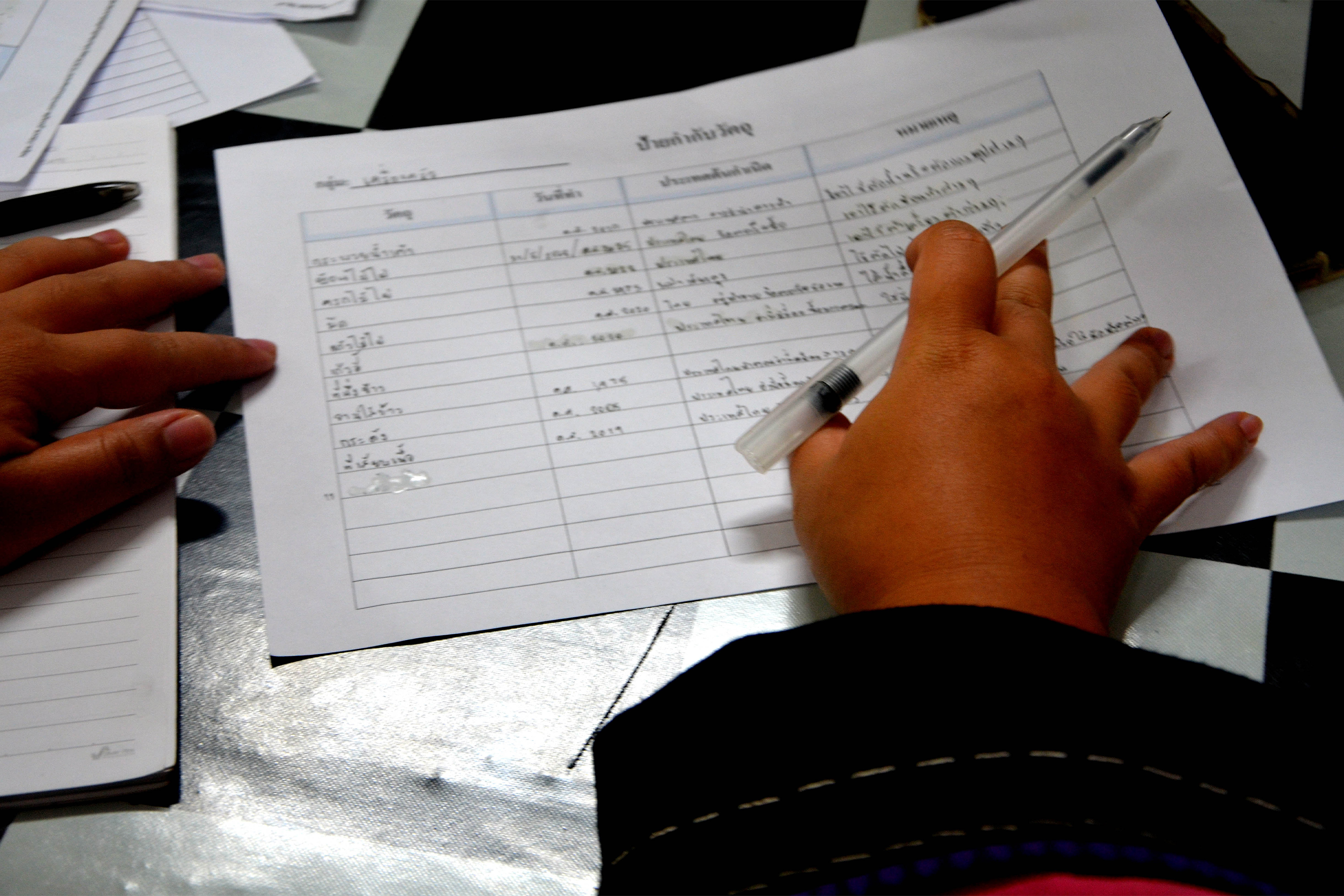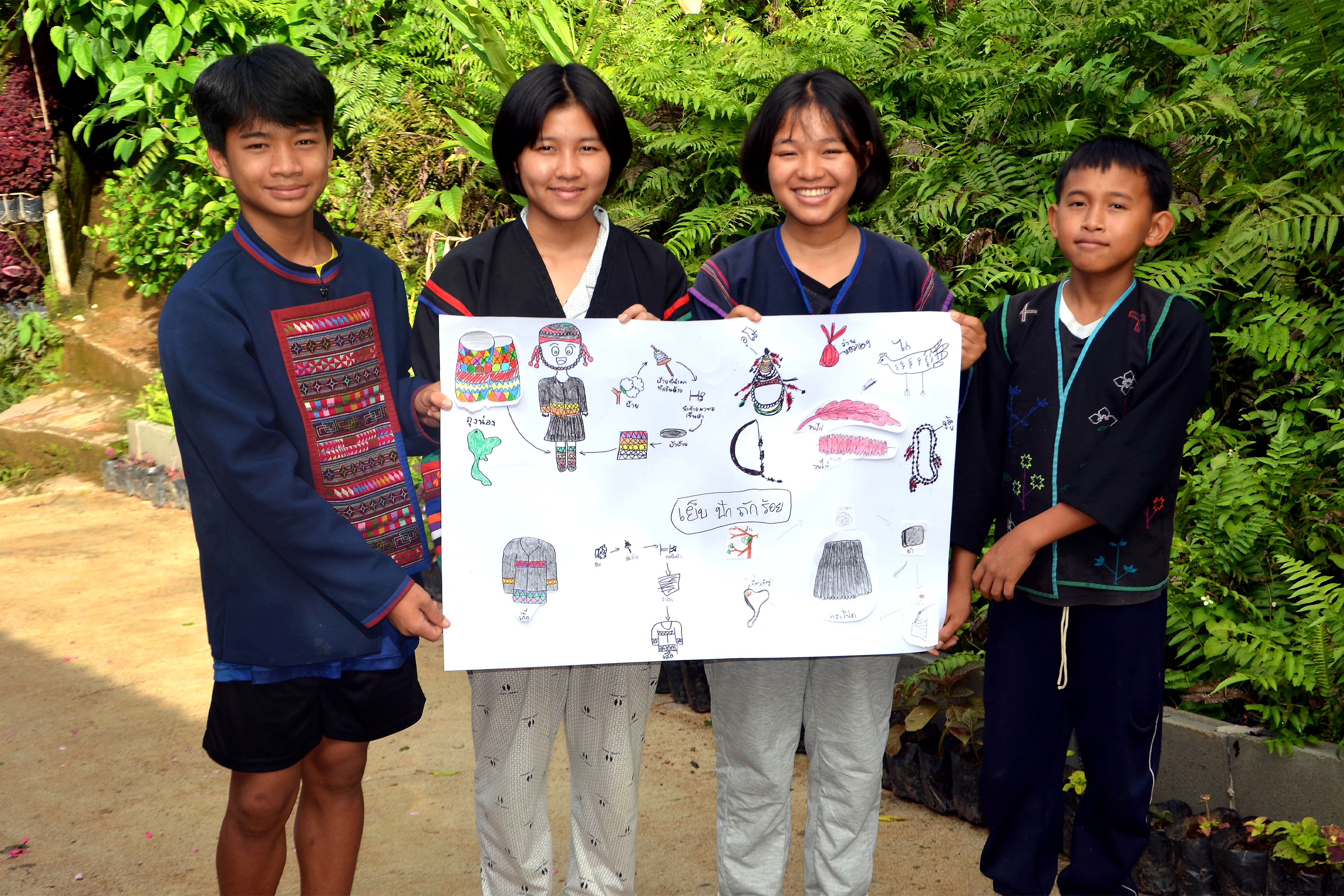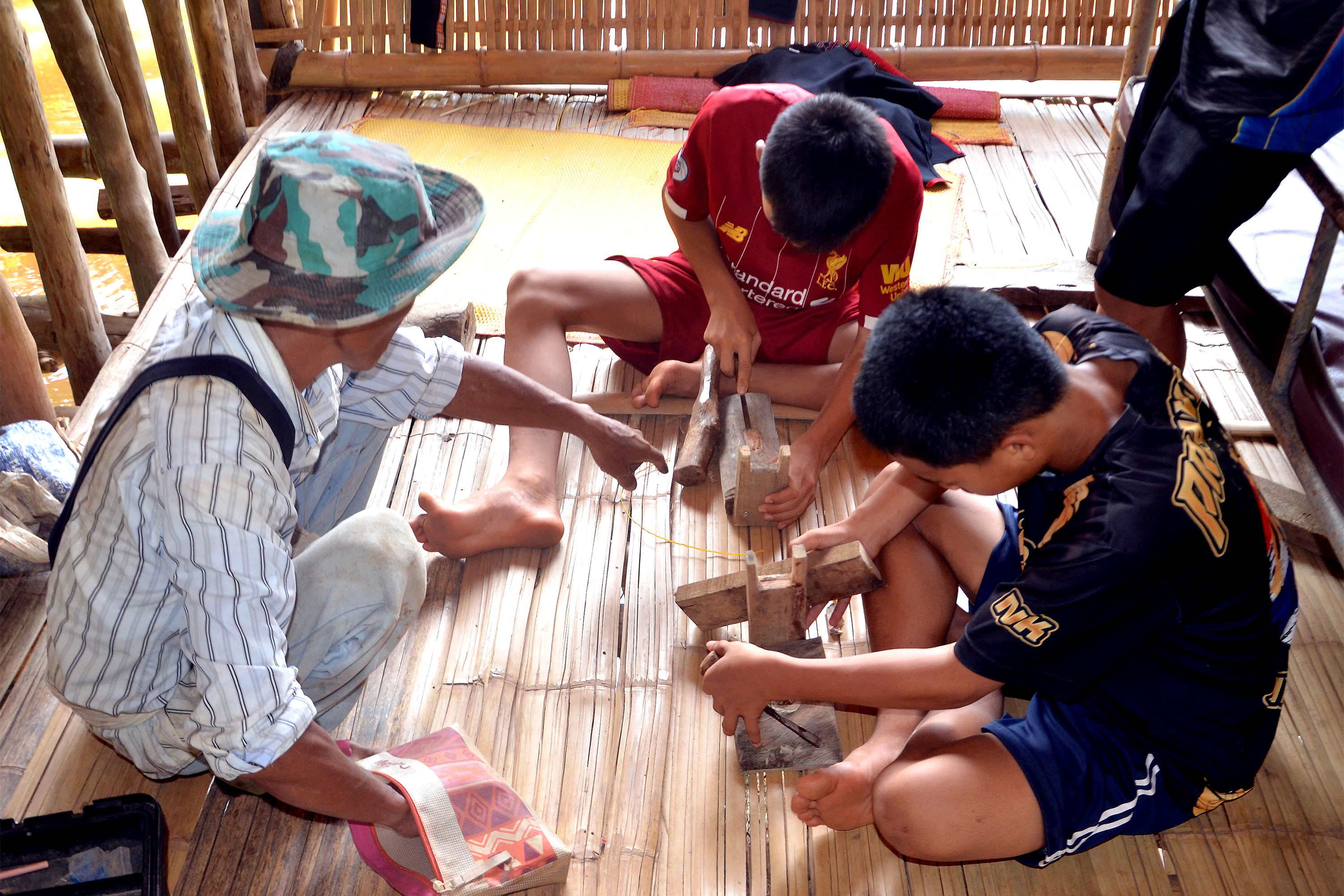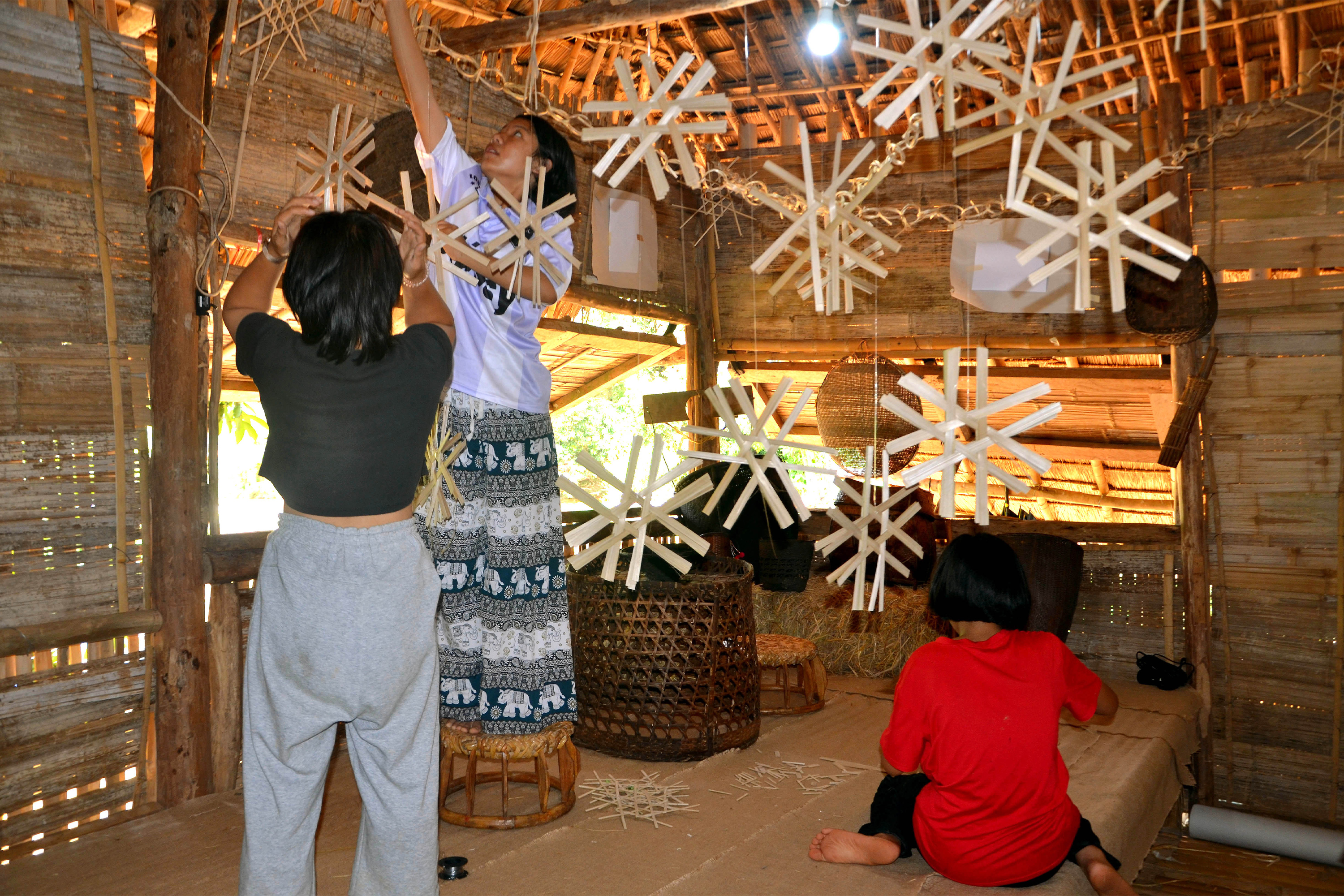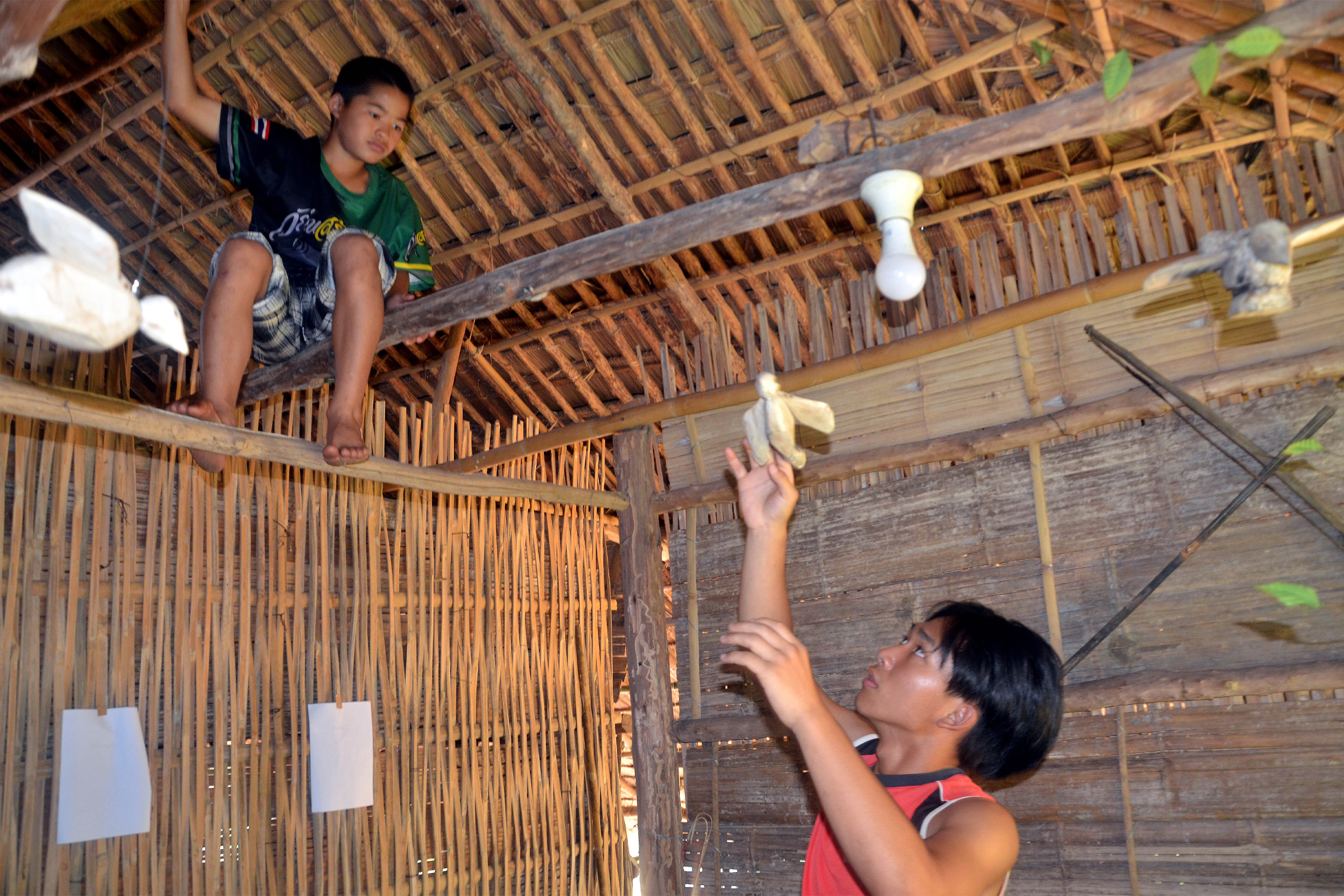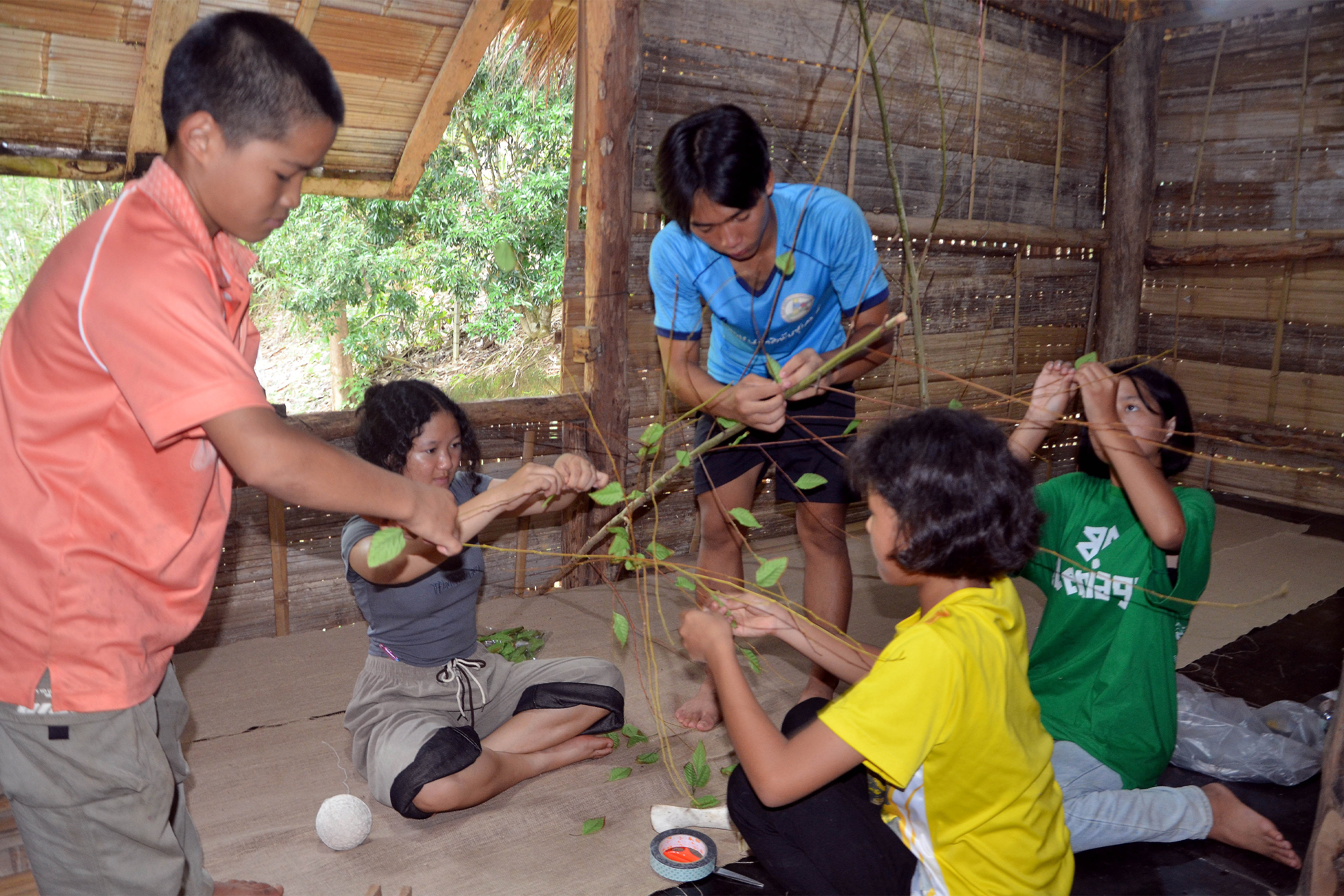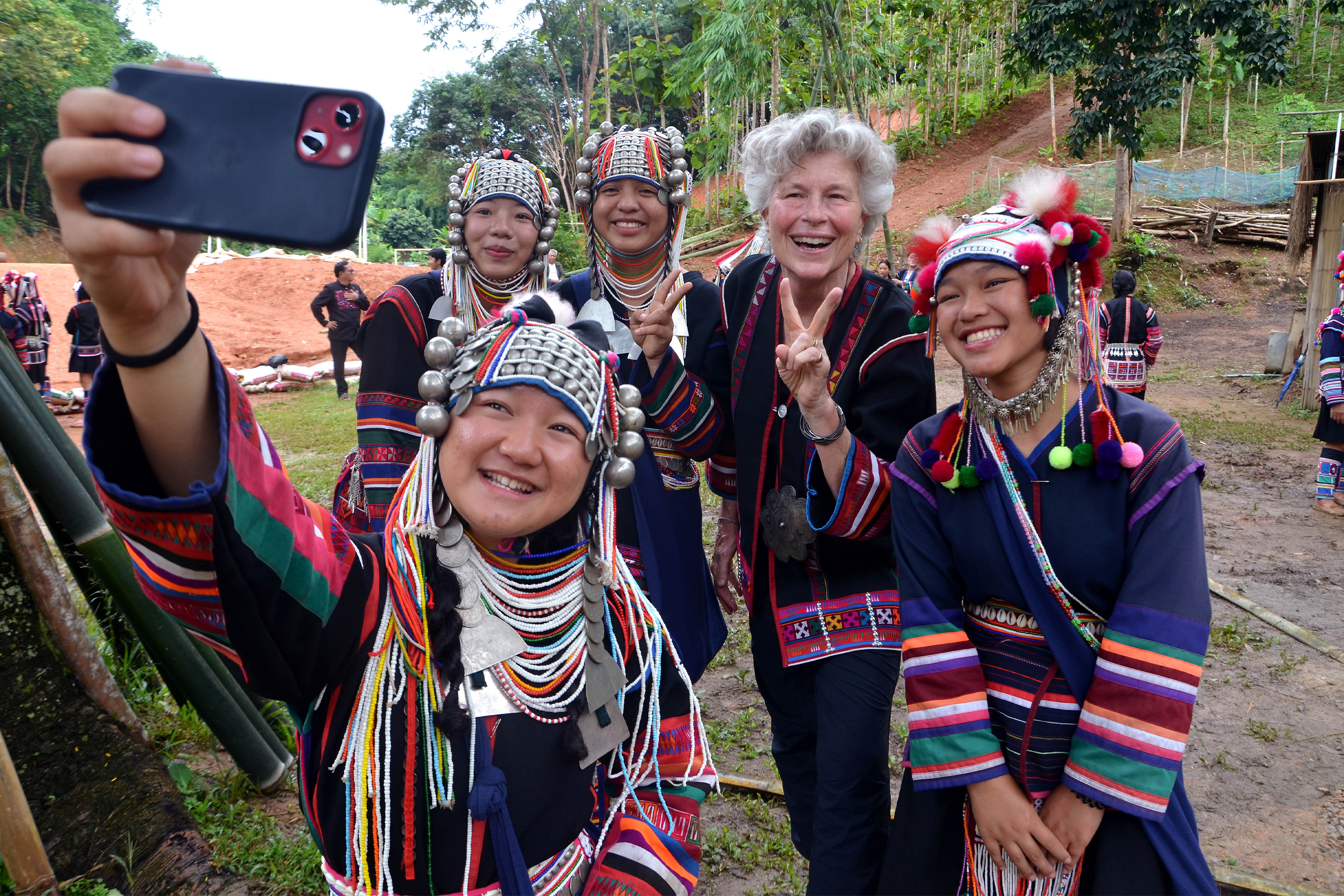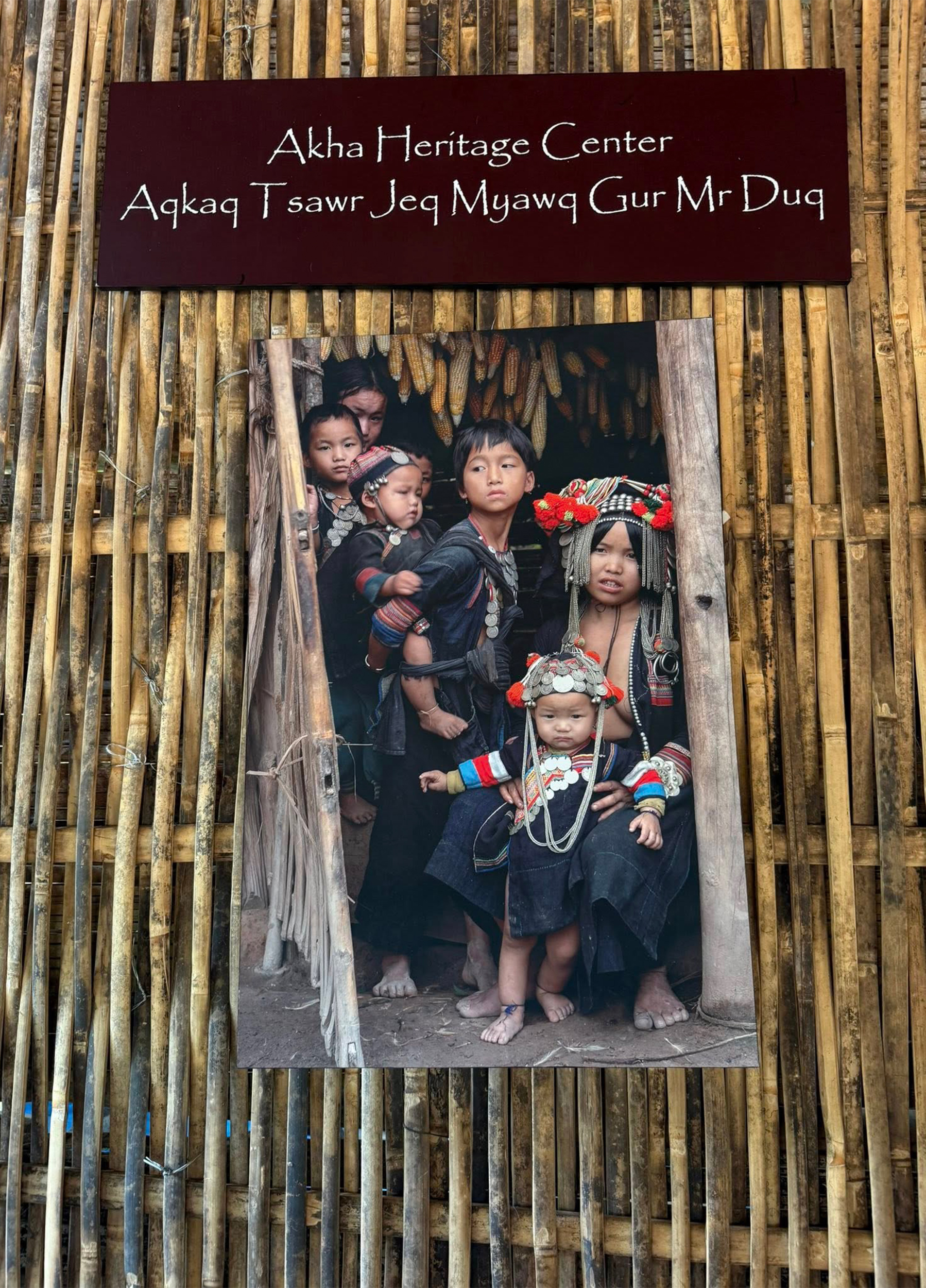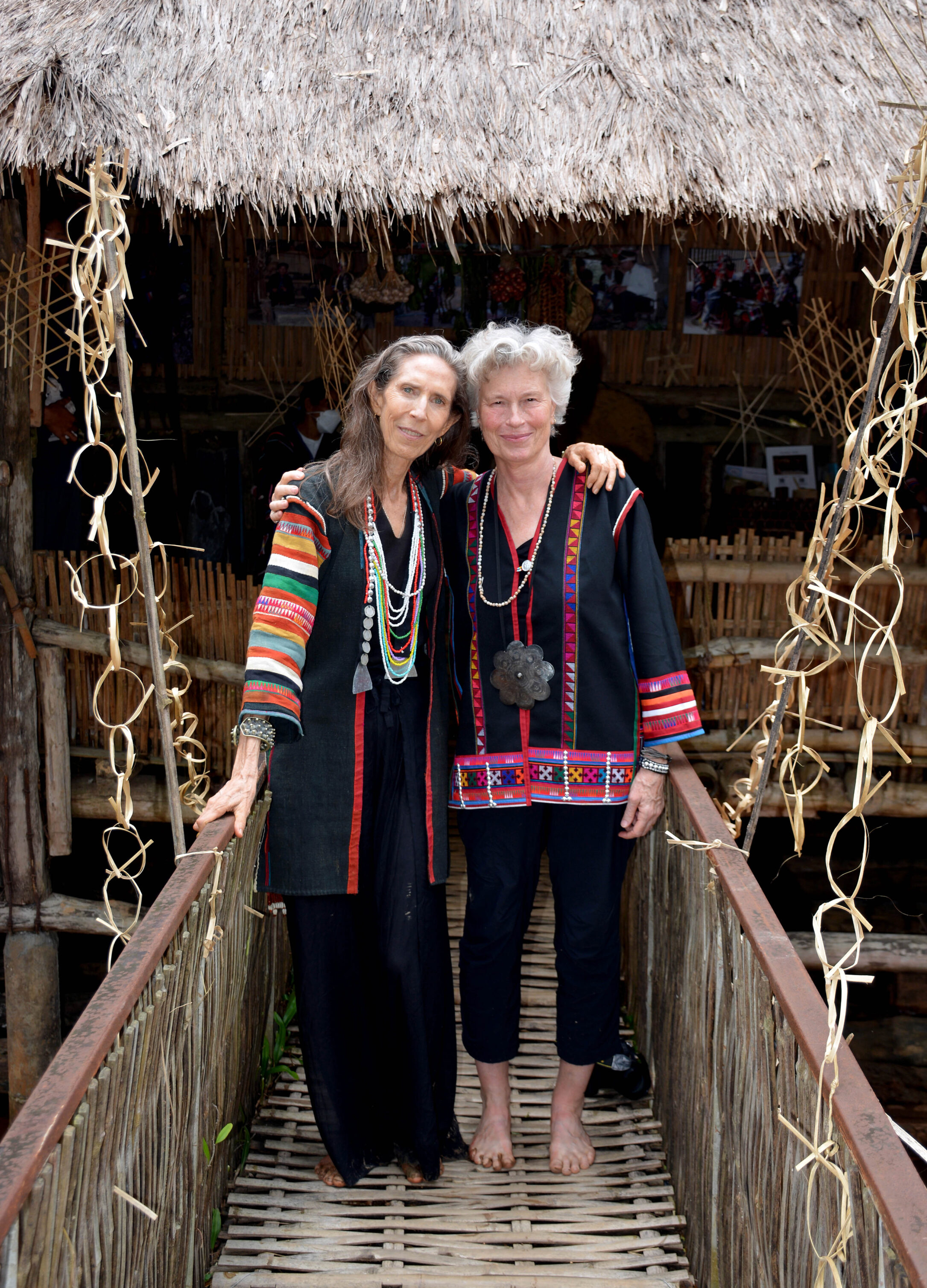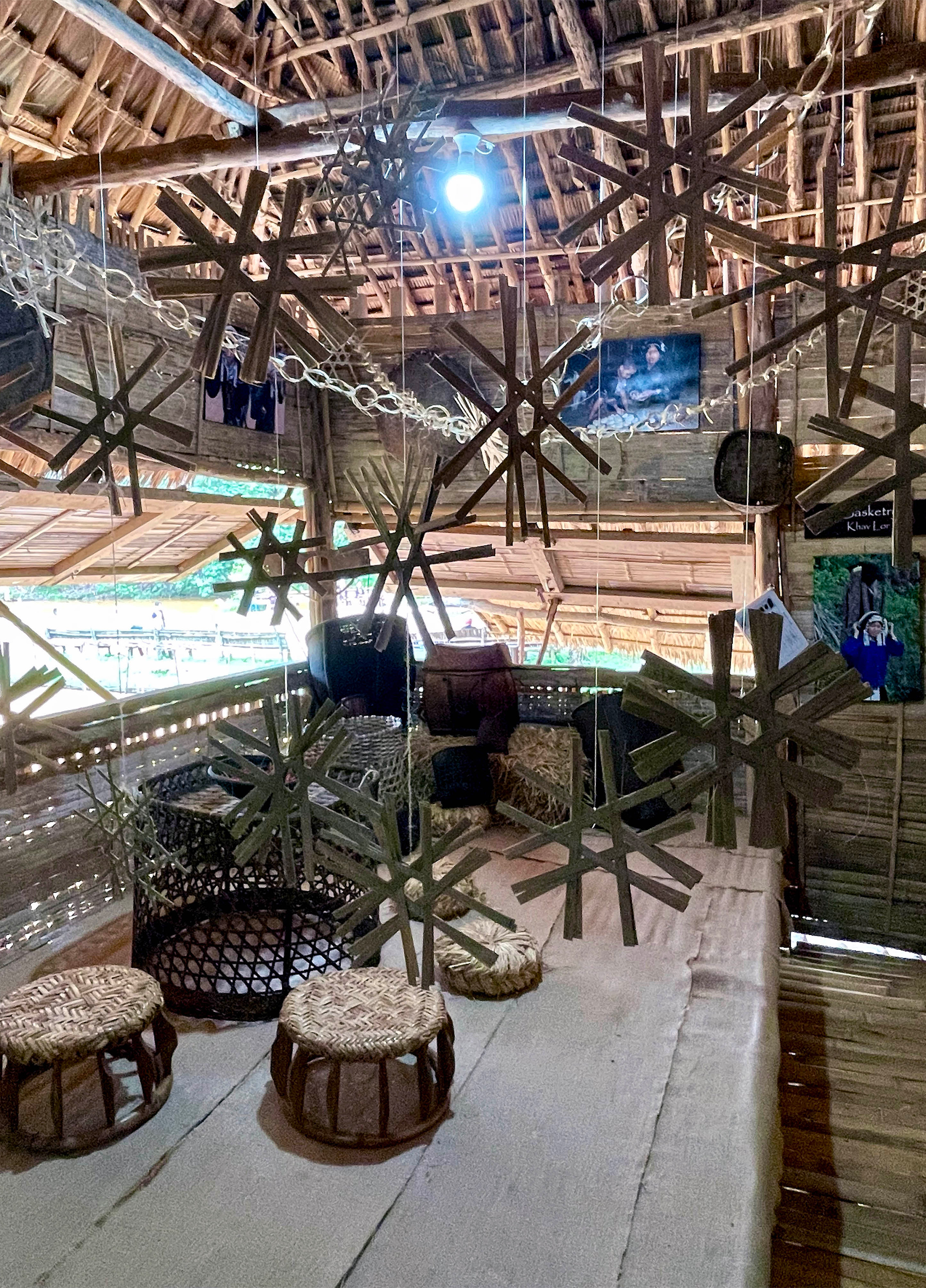Museum Curatorship Course
Museum Curatorship Course
Led by Dr. Lisa Roberts
Cultural Crossroads Asia is deeply honored that the prestigious Fulbright Educational Foundation recognized our proposal to launch a Museum Curatorship Course in an Akha village in northern Thailand as worthy of support.
Its generous grant allowed CCA the golden opportunity to collaborate with Fulbright Scholar Dr. Lisa Roberts, a highly regarded museum professional who has contributed to cultural institutions around the world for forty years.
Over the course of five weekends in May and June 2025, Lisa shared her vast knowledge in the fine art of protecting material and oral heritage with a class of twenty-two Akha students, aged 11 – 16 years, from the Akha Oral Tradition School in Ban Saen Suk, Chiang Rai, Thailand.
Lisa's insights inspired these Akha youth to consider the vital importance of cultural preservation as a way to maintain age-old Akha wisdom, communal coherence, and personal identity in the face of an everchanging multi-cultural world.
Pride in Akha Culture
What better way to kick off the course than to visit two ethnic museums in Chiang Rai, so students of our Akha Oral Tradition School, with no knowledge of such centers, might better understand the value of preserving and sustaining their heritage.
They expressed how exciting this new experience was – and how much they learned. Perhaps, most importantly, they also voiced their sense of pride in Akha culture.
To see their ancestral practices highlighted in such respected public spaces, where people from around the world gather to behold them, was inspiring and lasting in ways we may never truly appreciate. . .
Teams and Themes
Following a clear, step-by-step curriculum, Lisa introduced principles of museum curatorship. First step: Establish cohesive teams, whereby each member brings to the whole his individual strengths to best create a dynamic display.
At the fundamental level, a good team depends on those with specialized skills: a Project Director, Technology Expert (Photographer, Videographer), Writer, Designer, and Builder. Our students were divided into five groups with such a complementary skill set.
It was then up to each team to identify a subject for its display, leading them to choose such diverse themes as an Akha Hearth, Fishing and Hunting, Music, Textiles, and Basketry. And so, the curatorship journey begins. . .
The Art of Collecting
Building a collection in the mountains of the Golden Triangle starts in the home, the community, the market – wherever age-old artifacts might be found.
So much can be learned by speaking to villagers – especially elders, village leaders, cultural guardians, craftsmen and -women, and shamans – and by describing the focus and needs of the exhibit.
It is astounding how many ancestral objects are hidden away in the homes of people who do not even realize their historical, cultural, or aesthetic value.
The act of collecting not only spurs on a collaborative esprit de corps within the team, it also connects the collector to the item, and ultimately to the storytellers in the community. There are manifold wondrous tales and chronicles just waiting to be revealed.
Ideally, too, gathering artifacts from disparate sources brings the collector closer to the first peoples who originally designed and used them. These tried-and-true pieces are filled with generations-old relevance.
Collecting is the joy and honor of every curator.
Archival Records
Lisa presented steps for the children to think critically about documenting these artifacts – the Who, What, When, Where, Why, and How of it.
This was not only an invaluable experience in deep observation, it also prompted students to pose thoughtful questions to owners, artisans, and elders as they sought answers regarding the item's provenance, age, materials, size, function, and connection to the bigger world of Akha culture.
Now it was time for students to archive all they discovered about their collection – to keep meticulous records of each item, from the smallest spindle to the largest crossbow. Taken as a whole, these become the 'Holy Book' of their collection, something that can be referred to time after time and long into the future.
The tech team member then jumped into action, photographing every artifact using the lessons taught by BBC Journalist Clare Lyons in the Digital Storytelling Course in February 2025, capturing a variety of angles – wide shot, mid-shot, and close up – to illustrate its function, character, and design.
Designing an Exhibit Blueprint
Students of the Museum Curatorship Course were next tasked with surveying their collection and visualizing an arrangement that highlighted the artifacts in an informative and inspiring way. This took form first through discussion amongst the team members and then effectively in storyboards – a process that was repeated many times in many formats.
Prototypes were first drawn of all the objects, and, as plans became more refined, the storyboards depicted the collection in an organized arrangement.
Eventually this led to visiting the exhibition site to envision the artifacts in three-dimensions, from side to side and floor to upper beams. The last step before installation was to recreate a working exhibit in the classroom, where a plan of the exhibit space had been delineated on the floor.
Creating Display Mounts
With the help of Aryi Jupoh, a masterful Akha woodworker, the children conceived and crafted the fixtures and frames to best spotlight the artifacts in their collection. For the Akha, hand-crafting natural materials of wood, bamboo, rattan, and hay is second nature, providing a low-tech, low-cost, natural look that perfectly links these artifacts to the Akha lifestyle and worldview.
It also yielded a charming, naif 'look' that created a unifying through-line between the five exhibits, despite each one's unique subject and character.
Installing the Collections
The day had finally arrived when each group put their plans into motion – from laying out the floor covering, setting up the mounts, affixing text panels and photographs, hanging birds, textiles, instruments, baskets, and stars from ceiling beams, to setting out the collections. For two days, there was a swirl of creative energy.
And miracle of miracles, after their six-week course, the Akha youth of Ban Saen Suk, who had never before seen a museum, unveiled their newfound curatorship knowledge, their handiwork, and their imagination in a glorious vernissage of five exhibits: an Akha Hearth, Hunting and Fishing, Music, Textiles, and Basketry.
Gulung guma deh!
What an astonishing opportunity students of the Akha Oral Tradition School had to participate in this Museum Curatorship Course. We are grateful to the Ban Saen Suk leadership and community for taking this journey with us.
Heartfelt thanks go to Dr. Lisa Roberts for sharing her vast knowledge with our students in the mountains of northern Thailand. They will surely carry this with them throughout their lives. Please receive our warm Gulung guma deh!
Enormous appreciation also goes to the Fulbright Foundation for granting our school this once-in-a-lifetime experience. Thank you so much.
This initiative would not have been possible without the inspiration and support of Cultural Crossroads Asia and its director, Victoria Vorreiter, who aspire to Preserve Culture and Sustain Lives. For in fact, it is hoped that some of these Akha students will catch the spark of cultural conservation and choose to pursue it as a livelihood, carrying on the torch to new Akha generations.
Now it's time to see the fruits of the Museum Curatorship Course!
Please visit the Story and Slide Show of our new

